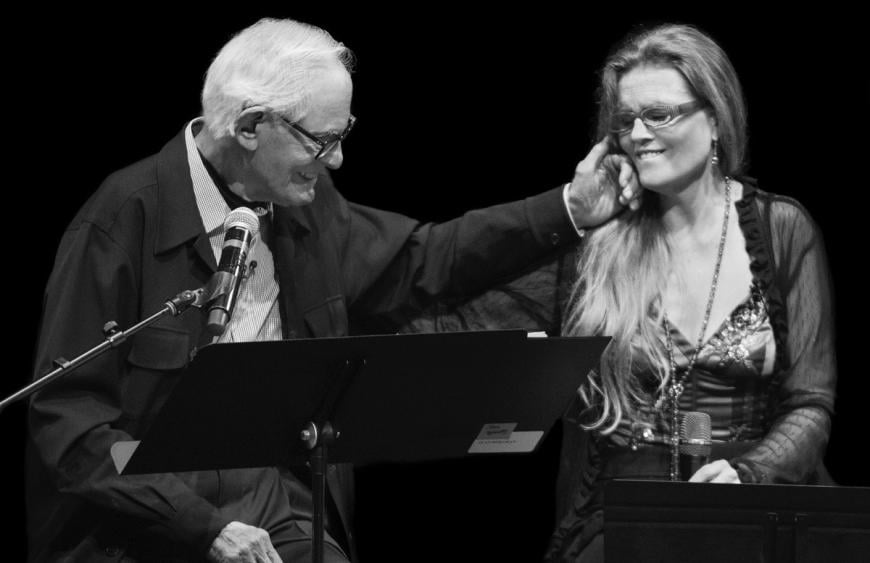
Alan without Marilyn Bergman, where do you start?
With Marilyn Bergman’s death last January at the age of 93, the curtain closed on one of American music’s most celebrated and productive partnerships. Marilyn’s lyric-writing collaboration with her husband Alan Bergman carried the elusive craft of Irving Berlin, Ira Gershwin, Dorothy Fields, and Johnny Mercer well into the 21st century, bejeweling the latter chapters of the American Songbook with oft-interpreted hits such as “The Windmills of Your Mind” (with Michel Legrand), “In the Heat of the Night” (with Quincy Jones), “The Way We Were” (with Marvin Hamlisch), and “It Might Be You” (with Dave Grusin), to name just a few.
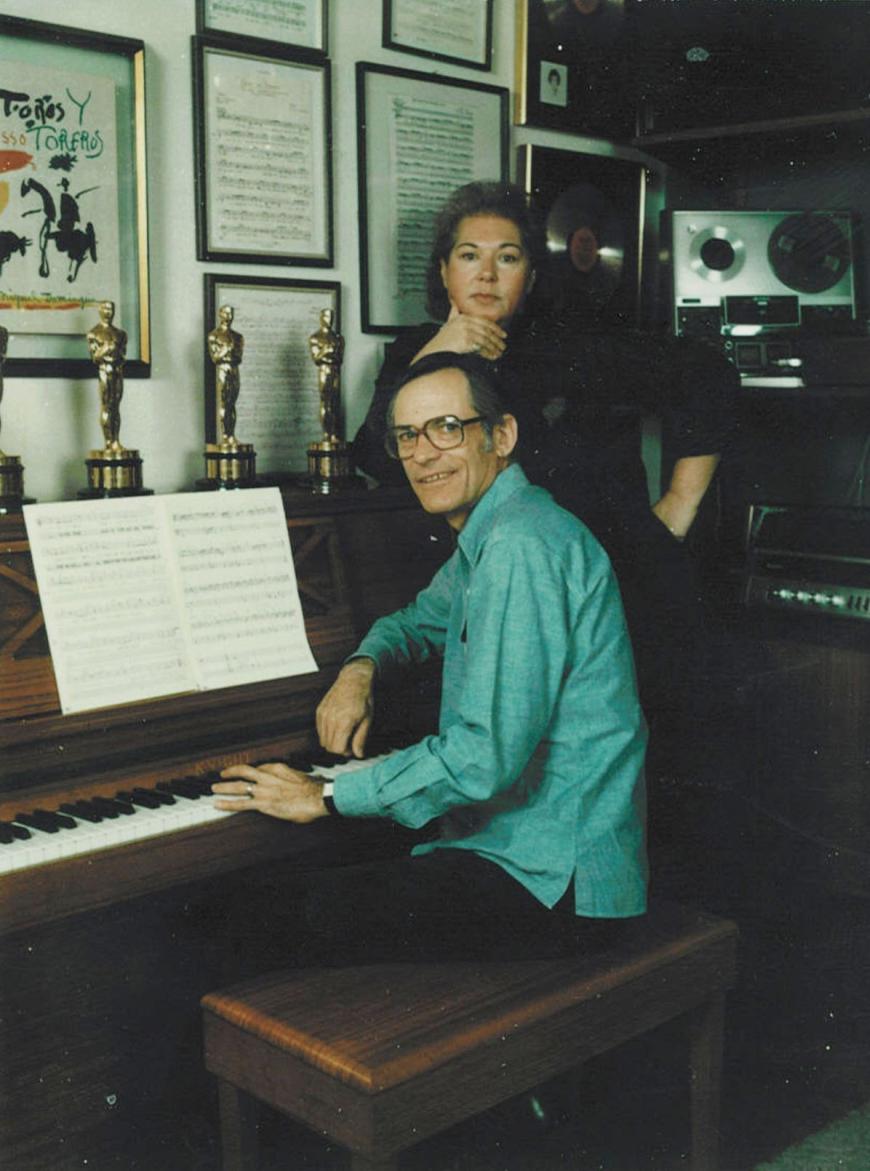
Married in 1958, the Bergmans hit the big time two years later with the Lew Spence tune “Nice ’n’ Easy,” a late arrival to a Frank Sinatra ballads project with arranger Nelson Riddle that made such an impression it became the title track for the chart-topping 1960 album. Eager upstarts embraced by their older Tin Pan Alley colleagues, they plunged into an entertainment scene hungry for new songs, writing for film, Broadway, television, and singers with a foot in the popular-song tradition. By 1980, while still in their mid-40s, the couple was inducted into the Songwriters Hall of Fame, adding to a trophy shelf that came to include four Emmys, three Oscars, and two Grammys.
Working together, always together, they were inseparable, felicitously fitting words to musical phrases without ever settling into defined roles. “We always wrote facing each other, never side by side,” Alan said in a recent video call from his home in Beverly Hills while seated on a cushy couch with Los Angeles jazz vocalist Tierney Sutton, a longtime friend and sounding board for the Bergmans. “I would sit on one chair, and she sat about five or six feet away from me. The role of the creator and editor would change within seconds. We would toss ideas back and forth. I can’t do that anymore. I toss them in my head. Luckily the ideas are still coming.”
At 96, Alan Bergman isn’t just soldiering forward. He’s entered a new creative phase working solo, fording fresh musical challenges in a way that might be unprecedented in American music. In conversation a few months ago for a story in anticipation of several concerts around the Bay Area, Sutton mentioned that she’d been recording demos for some of the new songs Alan had recently written on his own and that age and grief hadn’t dulled his passion or edge as a songwriter. I wondered, how does someone move forward when their life and creative partner of more than 60 years departs? How do you compensate for someone’s absence? As the Bergmans queried in one of my favorite songs of theirs, gracefully threading their lyrics along Johnny Mandel’s entwined melody: “Where do you start?”
“I love to write, and so I write every day,” Alan said. “I have these melodies by some wonderful composers, Roger Kellaway, Lalo Schifrin. I’m writing a song with Dave Grusin for Norman Lear’s 100th birthday. I just sent him some lyrics. He’s a wonderful melody writer. Pat Metheny! We’ve been writing some stuff together. My mentor was Johnny Mercer. I know I wouldn’t be here without him, and he always encouraged me to write to the melody. I have these melodies of Michel Legrand’s [who died in 2019], and I just finished two songs for Barbra Streisand’s new album.”
Alan’s first solo songs are just starting to surface in public, and they cover an array of musical situations. In the year or so before her death, Marilyn had gradually withdrawn from songwriting while Alan continued to work through “what felt to me like an elegant transition period,” said Sutton, who’s earned 10 Grammy Award nominations and widespread esteem as a jazz singer keenly aware of a lyric’s multifarious possible meanings.
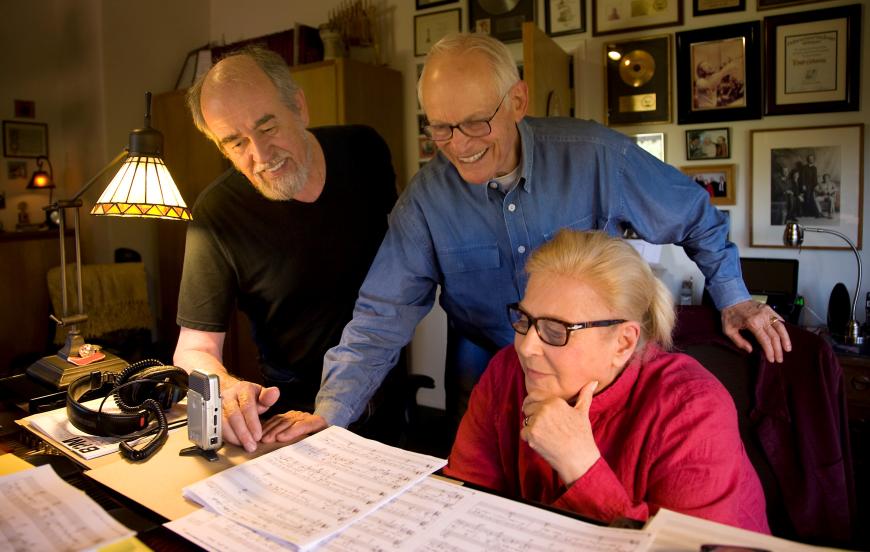
“I’d come over, and they’d be writing together,” Sutton said. “Marilyn wrote until she really didn’t want to write anymore. Until not so long before she passed, she would still give a word or a correction, the kind of stuff that Alan and Marilyn did for 60 years. At a certain point she stopped, and Alan just kept writing. It felt very natural, and certain projects were begun after Marilyn had stopped.”
The Legrand tunes come from an unusual assignment to write English lyrics for two songs originally composed for the French play Bistro with lyrics by the prolific Algerian-born songwriter Eddy Marnay (1920–2003). The Bergmans never reworked the lyrics of other writers, and Marilyn was smitten by the songs, “maybe the two best melodies Michel ever wrote,” Alan said. Marnay’s death left the tunes tangled in French copyright law, and it wasn’t until about 2018 “that Michel called us and said, ‘Okay, you can do the lyrics now,’” Alan said. “Because they wouldn’t be translations. For years I’ve had Barbra sing the melodies without any lyric.” He ended up writing the new songs by himself, with “L’adieu” and “Vivre quand on aime” reimagined as “You” and “We,” respectively.
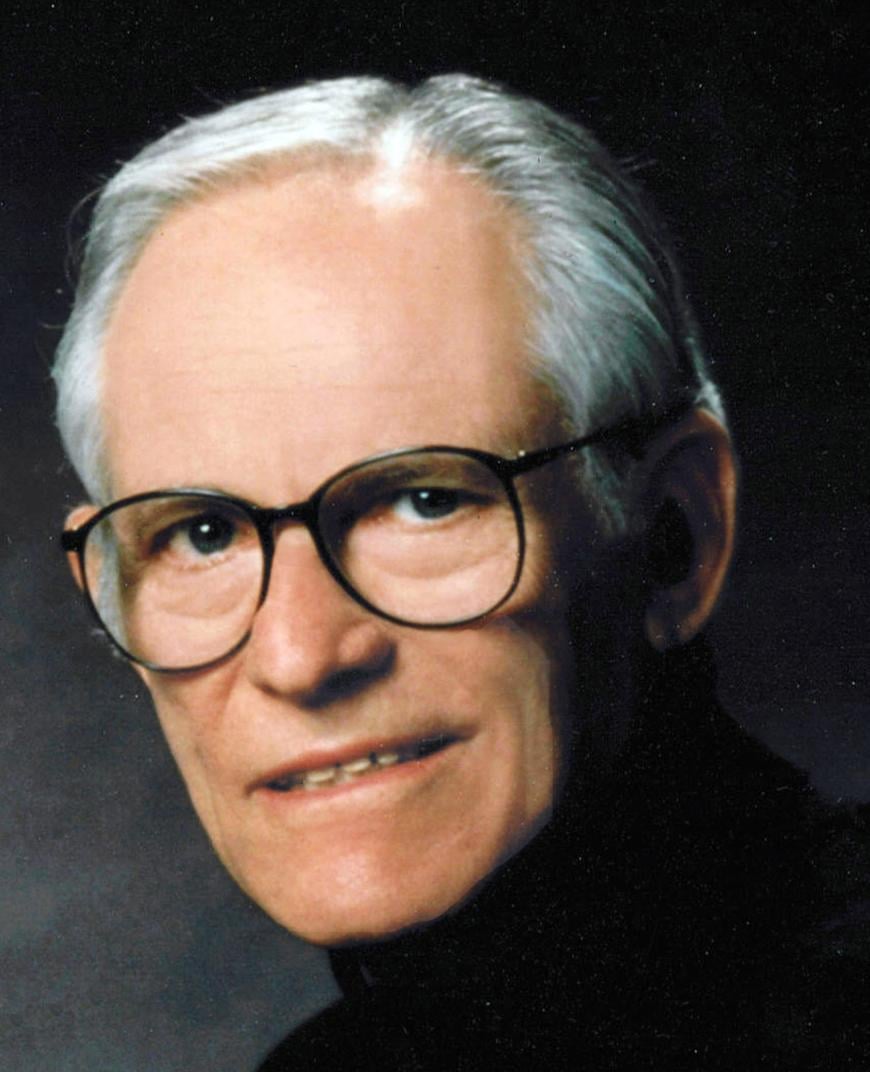
Alan’s also working with Roger Kellaway, the revered 82-year-old jazz pianist. A versatile arranger and composer whose credits include recordings with saxophonists Sonny Rollins, Ben Webster, and Stan Getz, as well as albums with George Harrison, Melanie, and Robben Ford, Kellaway traces his relationship with the Bergmans back some five decades. A longtime fan of their work, he was producing Carmen McRae’s first album for Blue Note, 1975’s I Am Music, when he found himself with a tune in need of a lyric. The Bergmans were already responsible for half the songs he and McRae selected for the album, including Dave Grusin’s “The Trouble With Hello Is Goodbye,” Quincy Jones’s “Faraway Forever,” and Dori Caymmi’s “Like a Lover.” Kellaway had written most of the album’s arrangements and approached Alan and Marilyn with his new piece, which led to the song “I Have the Feeling I’ve Been Here Before.”
Kellaway stayed close with the couple, collaborating on several more songs and projects over the years, and on hearing the news of Marilyn’s death he sat down and wrote the tribute “For Marilyn, In Loving Memory.” He sent the tune to his old friend a few weeks later, and in early spring he got a call from Alan, who had an idea for a lyric. But first they had to establish the ground rules, part of their longstanding procedure. “He asked, ‘Can I make any changes?’” Kellaway recounted. “I said ‘No. No changes. This is the song I wrote that day. This is what came out. You can’t mess with it.’ He said, ‘Okay.’”
One of the first songs that Alan wrote on his own turned out to be a fervent love letter, “Wherever I May Go (for Marilyn).” Vocalist Tawanda Suessbrich-Joaquim, who shared top honors at the Sarah Vaughan International Jazz Vocal Competition in June, premiered the song at Orange County’s Irvine Barclay Theater in July as a special guest with Eddie Daniels and the Roger Kellaway Trio. “I was blown away,” Kellaway said. “It’s such a deeply personal song. You could look at this like, that’s how committed Alan is to the relationship and how committed he is to songwriting.” Kellaway and Alan have written three more songs together since then and are working on another, and Kellaway is still trying to take the measure of what it means for Alan to be writing without Marilyn.
“I’ve thought about this a lot,” he said. “There is something different, but I can’t put my finger on it. I sense there’s a difference, but I haven’t got an answer. Our songs have been successful as far as we’re concerned. I was talking with one of Alan’s secretaries a few weeks ago and asked, ‘Should I send him this song?’ She said, ‘Absolutely. Alan likes to write songs.’ And when I talk to him, he’s very vibrant. It’s pretty extraordinary to witness.”
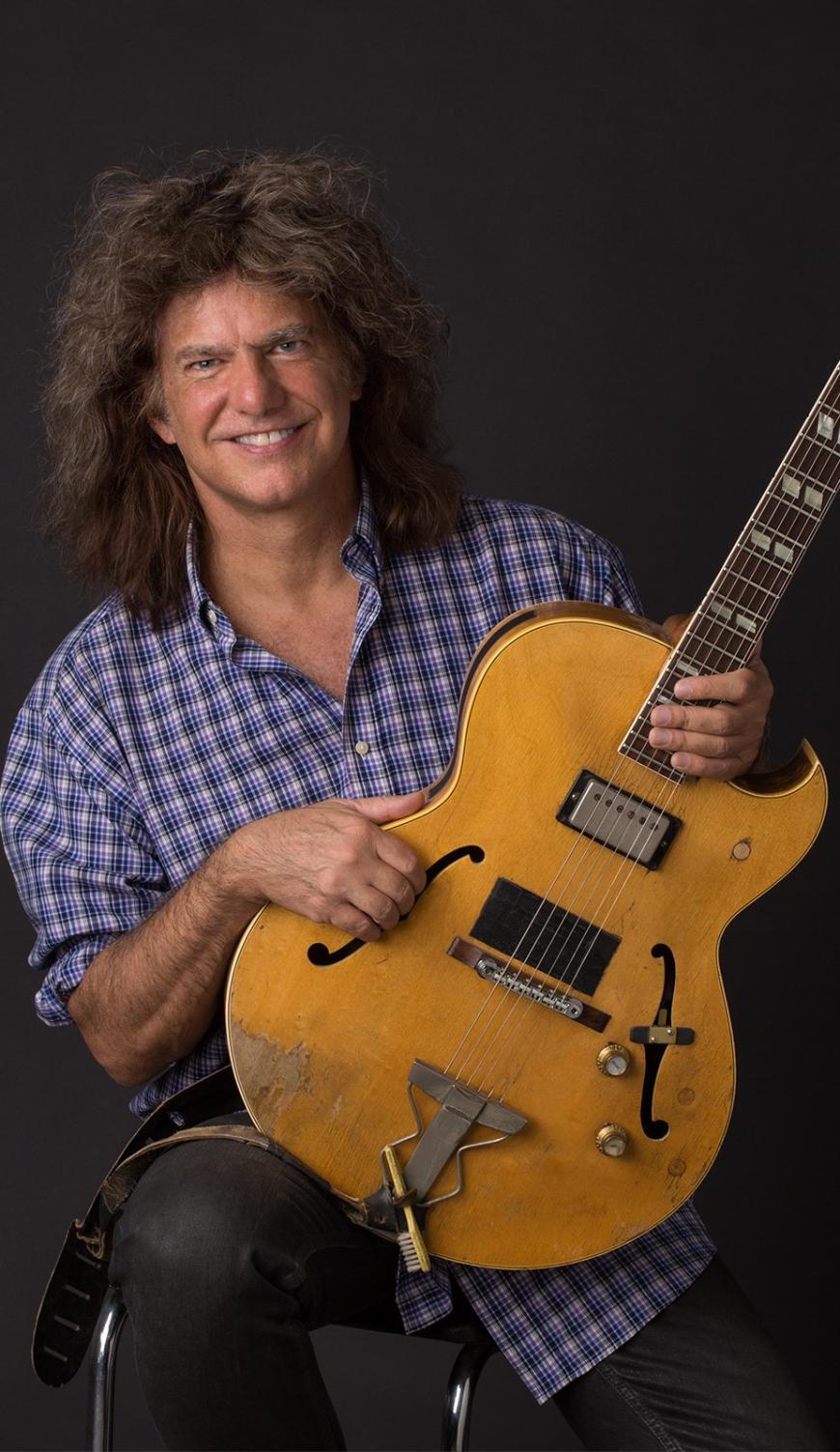
No collaboration better represents Alan’s willingness to explore unfamiliar terrain than his work with Pat Metheny. Among the most influential and popular jazz artists of the past four decades, the guitarist has written a vast body of compositions since the release of his 1976 debut album, Bright Size Life. Each of his 10 subsequent releases for ECM focused on his originals, which introduced a thrumming and occasionally ecstatic melodic sensibility deeply shaded by his Midwestern upbringing. On his post-ECM albums, he steadily investigated extended forms, lapidary textures, and lush electroacoustic instrumentation. His long, sinuous lines quickly attracted the attention of songwriters eager to work with his music.
“Almost right away, it seemed people were interested in writing words to my tunes,” Metheny emailed in response to a series of questions about the budding Bergman collaboration. “I think I must have boxes with dozens and dozens of tapes that folks have sent with their words set to tunes of mine from various recordings, and I have always appreciated that someone would like the music enough to take the time and energy required to do that.
“But with very few exceptions, without knowing that much about the craft itself, I knew that compared to the greatest lyrics (“All the Things You Are,” “Windmills of Your Mind,” etc.), what I was getting was missing that thing that happens when not just the meaning is correct and compelling. The feeling of the words, the way the words land on certain target notes, and that ideal x/y thing of inevitability mixed with surprise that seems to reveal itself in the best of almost every art form mostly wasn’t there.”
Sutton gets the credit for making the match between Metheny and the Bergmans. Hanging out with the guitarist backstage at the 2012 Monterey Jazz Festival, she happened to ask him who had written lyrics that he’d liked for his tunes. He admitted that no one had really come close yet. “Alan and Marilyn Bergman are dear friends of mine, and we talk often about how the art of really good lyric writing is almost lost,’” she replied. “And he said, ‘Them! I want them to write for me, please!’”
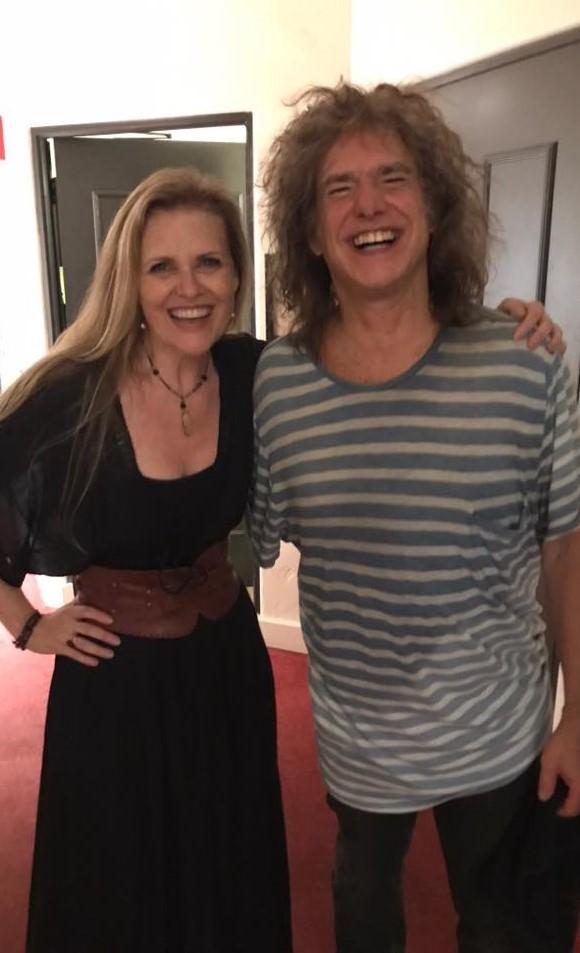
She facilitated the connection, but with Metheny’s globetrotting schedule and a mishap or two along the way, it took several years before the Bergmans had his sheet music in hand. Sutton was on hand the first time they all met in person and sat in with Metheny as a special guest at Santa Barbara’s Lobero Theatre in 2018, when the couple was in the house to unexpectedly hear her premiere their lyric for the ballad “Love May Take Awhile.” The Bergmans were delighted. Metheny “was literally stunned,” he recalled.
“I sat there for about an hour just absorbing it. It seemed impossible that it could be that perfect. Every lyric landed exactly in the right place and, most notably, with the right sound for that moment in the tune. I think this is the part that sets their work apart. It has meaning that speaks to anyone and everyone. It functions perfectly, interestingly, exceptionally, in an expositional way. But above all, while doing all that, it sounds good.”
Metheny has never tried writing his own lyrics, and his music is rarely programmatic. But like many jazz musicians, he’s deeply engaged with the American Songbook. He’s also spent a good deal of time with older musicians who made a point of knowing the lyrics to standards, “so I made it my business to do the same,” he wrote. “As abstract as ‘instrumental’ music may or may not be, I somehow have always related to the idea of ‘tunes.’”
The collaboration started as a triumvirate with the Bergmans, and it’s continued as a duo with Alan, producing another four songs on the way to a full program of material that Metheny is planning to record for an album. For Alan, the relationship has ushered him into less familiar territory, as Metheny doesn’t tend to employ a standard 32-bar format. “His way of expressing the melody is not in the regular form, which is fun for me,” Bergman said. “You can tell longer stories. Expound on them a little more. The ideas that you think of can’t be small.”
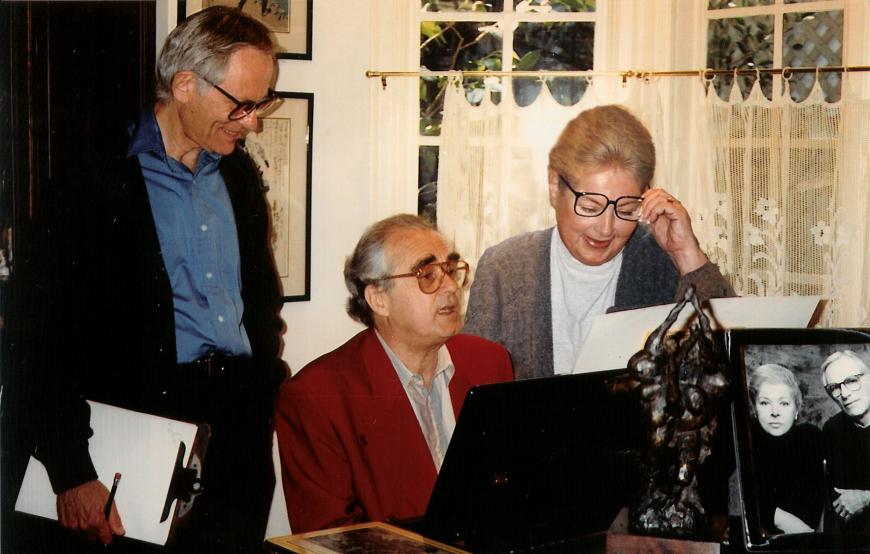
In order to think big, however, Alan and Metheny have to get into the nitty gritty. As an artist known for delving obsessively into various aspects of music-making, from attaining virtuosic technique on an array of guitars to solving technological challenges, Metheny’s found a similarly perfectionist partner.
“Quite often Alan has sent me many, many revisions, changing just one word, adding just one element to the story, rewriting entire sections,” he wrote. “Watching the craft of mastery at this level reveal itself has been one of the best experiences I’ve ever had. And all this back-and-forth is all happening in the form of very specific rhythms, notated in very specific ways. There are discussions about 16th notes versus triplets, questions about harmonic rhythm, and ways that forms may or may not be expanded.”
The question that the Bergmans posed in their masterpiece with Johnny Mandel, “Where Do You Start?” seems to have a corollary. Where do you stop? How do you separate a work in progress from a polished keeper? Even a hit recording doesn’t close the file for Alan Bergman.
“People always ask, ‘When do you know that you’re finished and it’s over?’” he said. “You only finish when they take it away. But even then, sometimes I find I look back at a couple of songs and say, ‘This can be better,’ and I try to make it better. In the case of that wonderful melody of Johnny Mandel’s, we always felt there are words on the tips of those notes, and we have to find them.”



